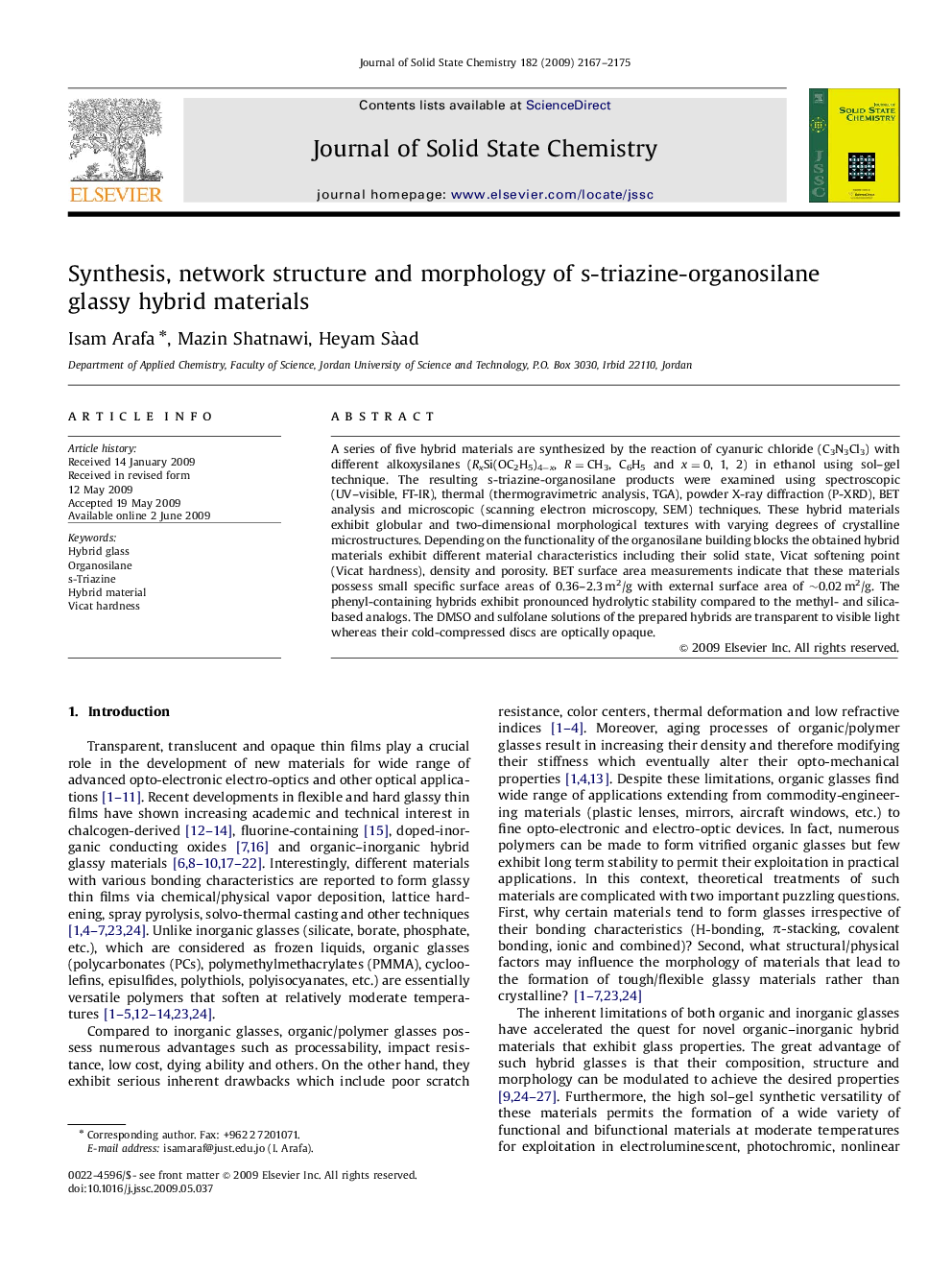| Article ID | Journal | Published Year | Pages | File Type |
|---|---|---|---|---|
| 1331683 | Journal of Solid State Chemistry | 2009 | 9 Pages |
A series of five hybrid materials are synthesized by the reaction of cyanuric chloride (C3N3Cl3) with different alkoxysilanes (RxSi(OC2H5)4−x, R=CH3, C6H5 and x=0, 1, 2) in ethanol using sol–gel technique. The resulting s-triazine-organosilane products were examined using spectroscopic (UV–visible, FT-IR), thermal (thermogravimetric analysis, TGA), powder X-ray diffraction (P-XRD), BET analysis and microscopic (scanning electron microscopy, SEM) techniques. These hybrid materials exhibit globular and two-dimensional morphological textures with varying degrees of crystalline microstructures. Depending on the functionality of the organosilane building blocks the obtained hybrid materials exhibit different material characteristics including their solid state, Vicat softening point (Vicat hardness), density and porosity. BET surface area measurements indicate that these materials possess small specific surface areas of 0.36–2.3 m2/g with external surface area of ~0.02 m2/g. The phenyl-containing hybrids exhibit pronounced hydrolytic stability compared to the methyl- and silica-based analogs. The DMSO and sulfolane solutions of the prepared hybrids are transparent to visible light whereas their cold-compressed discs are optically opaque.
Graphical abstractNetwork structure of s-triazine-organosilane glassy hybrid materials.Figure optionsDownload full-size imageDownload as PowerPoint slide
